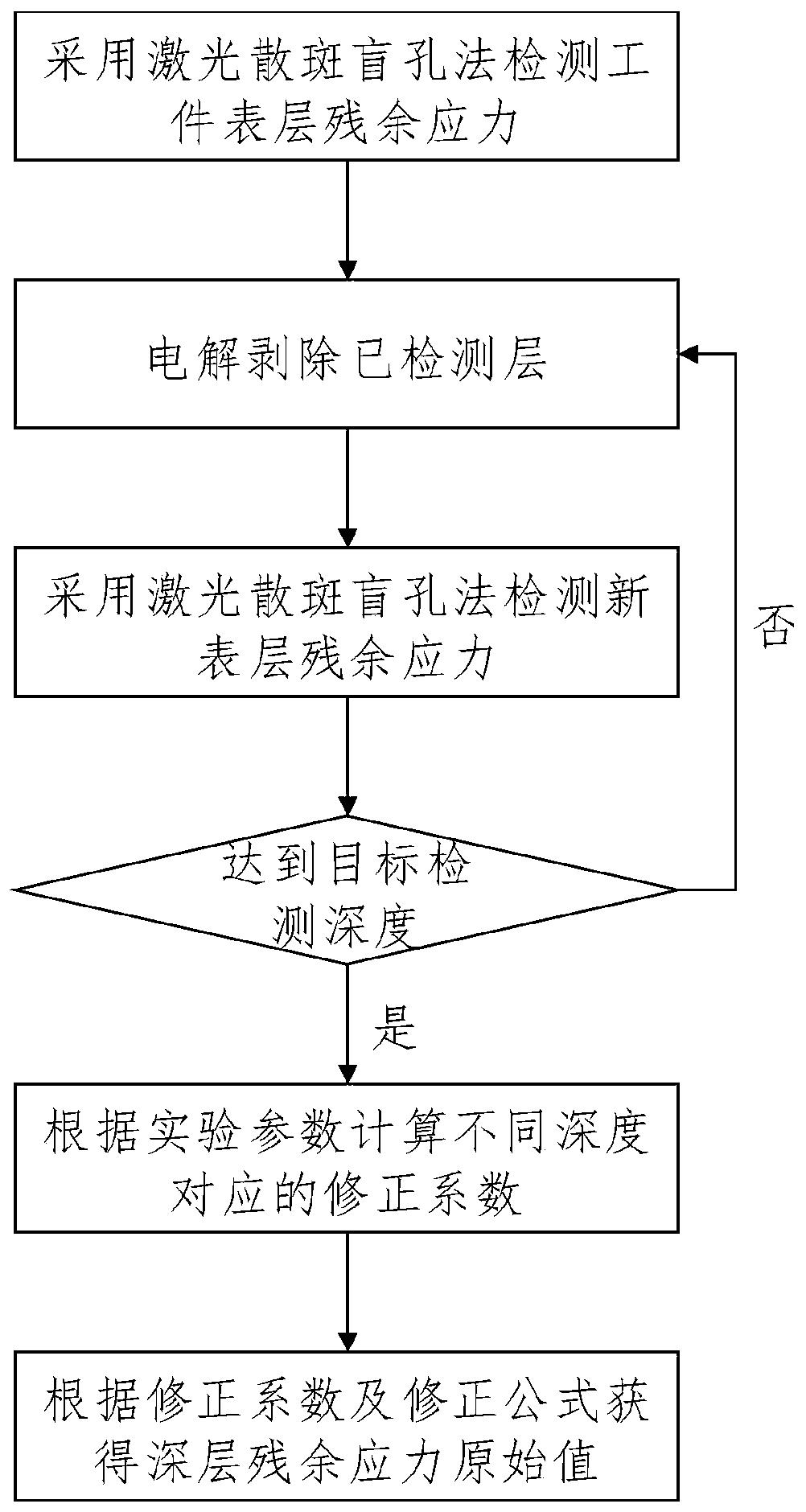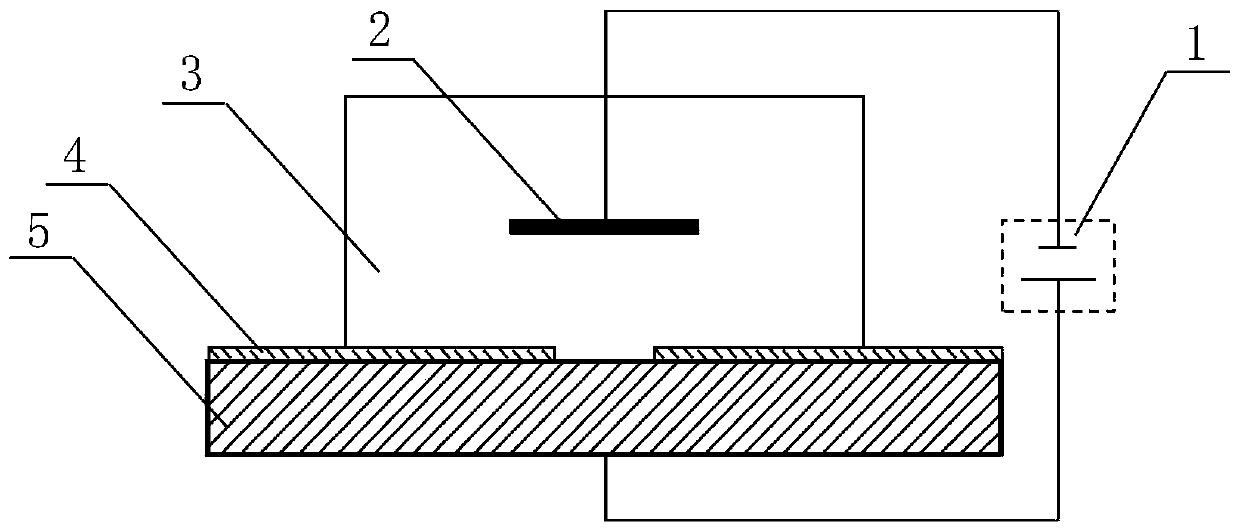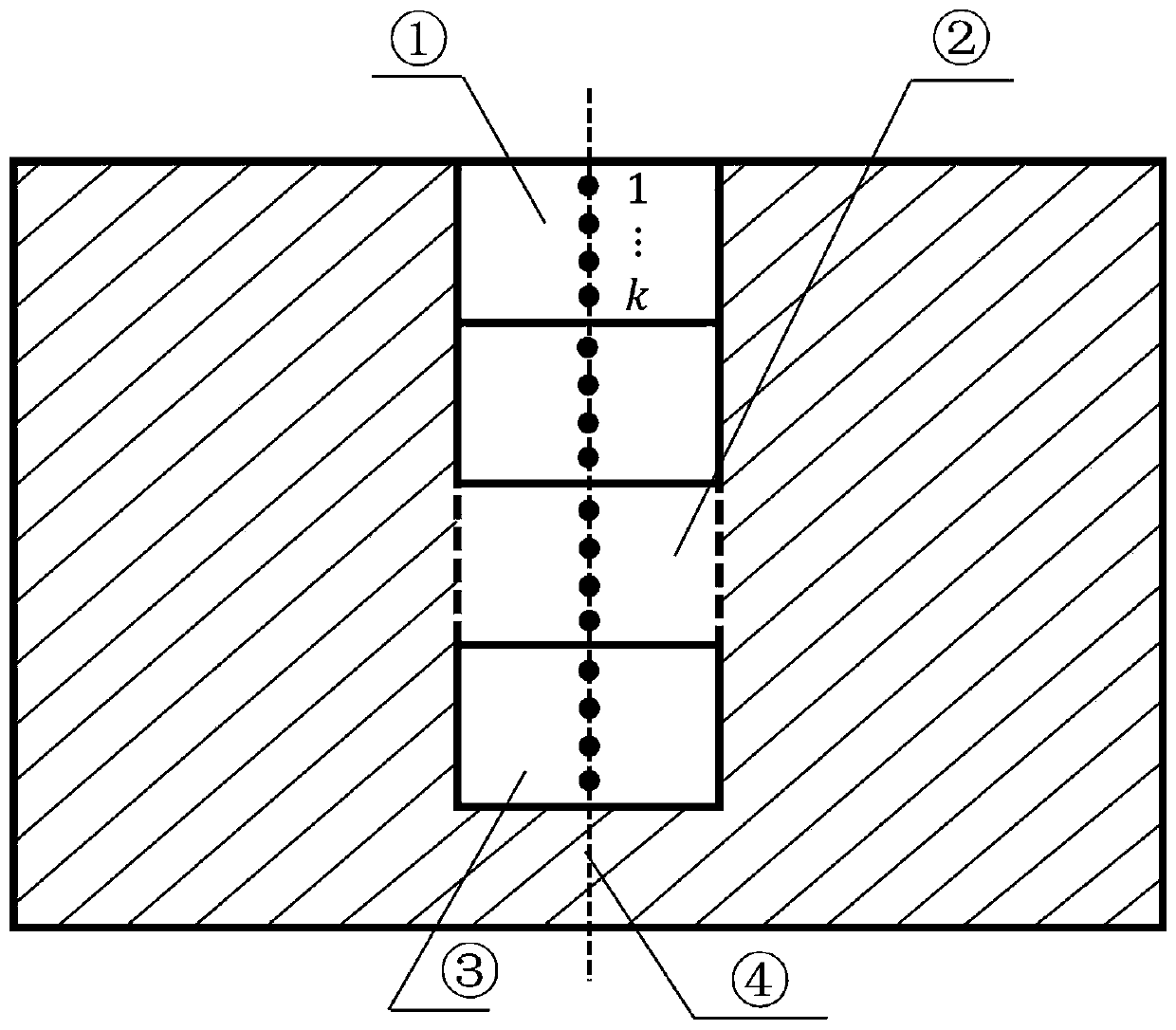Method for detecting residual stress of deep layer of workpiece
A residual stress and deep-layer technology, which is applied in the preparation of test samples, measuring devices, force/torque/work measuring instruments, etc., can solve the problems of high requirements on the microstructure of workpieces, large detection limitations, and low efficiency, and achieve The effect of fast detection speed, high detection efficiency and simple detection process
- Summary
- Abstract
- Description
- Claims
- Application Information
AI Technical Summary
Problems solved by technology
Method used
Image
Examples
Embodiment Construction
[0036] In order to better express the technical solution of the present invention, the details of the technical solution of an embodiment of detecting the residual stress from the surface layer to the depth of 2mm of a pure iron flat workpiece are described in detail in conjunction with the accompanying drawings.
[0037] As shown in the figure, the present invention relates to a method for detecting deep residual stress of a workpiece, and the basic implementation steps include:
[0038] The first step is to use the laser speckle blind hole method to detect the residual stress on the surface of the workpiece;
[0039] In this embodiment, the size of the pure iron workpiece is 60mm in diameter and 4mm in thickness. The sample is introduced with residual stress through the quenching heat treatment process. In the blind hole drilling process, the drilling diameter is 0.9mm, and the drilling depth is 0.5mm. In order to obtain the residual stress distribution of the residual stre...
PUM
 Login to View More
Login to View More Abstract
Description
Claims
Application Information
 Login to View More
Login to View More - Generate Ideas
- Intellectual Property
- Life Sciences
- Materials
- Tech Scout
- Unparalleled Data Quality
- Higher Quality Content
- 60% Fewer Hallucinations
Browse by: Latest US Patents, China's latest patents, Technical Efficacy Thesaurus, Application Domain, Technology Topic, Popular Technical Reports.
© 2025 PatSnap. All rights reserved.Legal|Privacy policy|Modern Slavery Act Transparency Statement|Sitemap|About US| Contact US: help@patsnap.com



